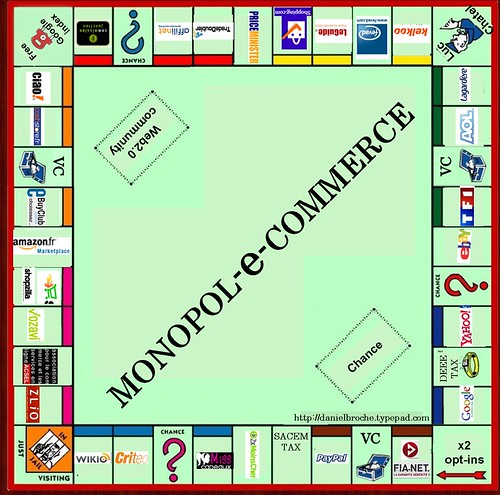For all you internet marketing pros out there, here’s the only brand building guide you’ll ever need. I’ll begin with some brief introductory notes, then get into meaty examples you can sink your teeth into.
If you like this article, please do at least one of the following when you’re done with it.
- Link to this post. Here’s html code you can copy-paste: <a href=”http://seoroi.com/case-studies/brand-building-online/”>Brand Building Online – A How To Guide for Internet Marketers</a>
- Stumble it:

- Add my rss feed to your reader.

 by Leonard Low Before I begin, “scratchpad”-style article. Scratchpads are my brain-dump notes on particular topics. They allow me to be less formal, while sharing more value in a single post than I could with formal constraints.
by Leonard Low Before I begin, “scratchpad”-style article. Scratchpads are my brain-dump notes on particular topics. They allow me to be less formal, while sharing more value in a single post than I could with formal constraints.
Anyways, there are 6 big points that are key for online brand building.
1. What exactly is a brand? Here’s a hint: People are talking.
2. The web revolutionizes how we communicate. This means that the web also revolutionizes brand building.
3. Branding via word of mouth and branding via advertising. We all know word of mouth is stronger, but what’s it look like in practice?
4. Usability is a crucial element in online branding. It’s not just a ‘nice to have,’ so ignore it at your peril.
5. Aaron Wall claimed that a big brands is the strongest ranking factor in Google. I’m skeptical. Google shifted their algorithms to help sites with brand characteristics, which lifted both branded and non-brand sites. So we were both right.
6. What can viral marketing do for brand awareness? I’ve got the case studies. (Also cookies, milk, ice cream and a ridiculous urge to write at 3am…)
1. Brands are the associations made with them by everyone that has a relationship to the person or company represented by the brand . I find myself amused when logo designers call themselves ‘brand identity consultants.’ Dude, you’re a graphic designer with delusions of grandeur.
Ok, I’m exaggerating. Some savvy graphic designers play a key role in branding with their logos/colour schemes/layouts. For instance, serif fonts are typically associated with upscale brands, which is why I chose a serif font when I had my logo made – SEO ROI Services is a premium consultancy. Not mass market, like the unserifed Walmart. But brands are more than the graphics that represent them.
Brands are really a set of commonly perceived traits. This is true of both internal perceptions, such as those of employees, and also true of external perceptions, namely those of the public. 
 by armadillo444
by armadillo444
Branding is the creation of a personality. Every interaction (or ommission) defines a company’s personality traits – good or bad – and is thus part of its branding. By creating a personality, a company can build relationships despite not being a real human being.
The practice of branding is as old as business itself, then. When merchant fleets of the Middle Ages got financing, it was because the financiers perceived the fleets’ owners as savvy businessmen and risk managers. (They’d have a 750+ FICO score from Experian, Equifax or TransUnion in modern terms 😉 ).
With the rise of the corporation, branding as a discipline came into its own, usually within the purview of marketing.
This is because of branding’s potential for positive effects on generating sales – the marketing department’s goal – and because marketing is the department responsible for communications with third parties – the marketing department’s means.
Communication is a means of building relationships, which in turn shape perceptions. Therefore, marketing – by building relationships with outside parties – builds your brand. If you step back and think about this, that means that every act of the marketing department is [external] branding. If you think about this further, every communication of an employee is part of the company’s branding
2. The web revolutionized communication. So the web revolutionizes branding, too.
What changed? One example is price – The Internet is the cheapest communication medium in existence, and often very easy to use. Mass-branding is thus accessible to small businesses at little to no cost.
Where is the impact? It’s Global – Geography no longer limits your brand building efforts, because you can have relationships with people halfway around the world. I should know – a close associate of mine is Ann, who lives in Russia!
Who is affected? One notable change is that the public / private faces of company brands are blurring. Before the web, companies could buy ads to look sweet-and-friendly while behaving terribly towards employees. But with the web, this information gets published every day. While management thinks is sly trickery known only to employees, those employees and ex-employees out them as scammers.
To return to what I was saying earlier about brand perceptions, Walmart is cheap, low-to-average quality products and anti-union management. Their B2B brand is even worse, because many of their suppliers feel they’re abusive, though some have become more efficient as a result of winning Walmart contracts.
This shows that you can shape your brand identity in part with advertising and public relations strategies.
Brand identity consulting exists and makes sense to buy as a service, don’t get me wrong. Walmart constantly promotes itself as being cheap, and that’s its brand now.
My sister’s makeup clients want to promote themselves as fashion creators, and they’re mostly successful.

But the most effective branding, like I hinted out above, is word of mouth. Referrals. If you have a heart-to-heart with my sister, she’ll tell you which makeup brands rock and which to avoid. And I guarantee that those people who have such conversations with her are much likelier to favour the brands she recommends, and disfavour those she hates.
The brand value of that is priceless. Literally. No matter how much advertising you buy, you can’t get that. See point 2, below.
For online marketers, this is how you explain the value of engaging in social media on a non-broadcast basis. The value of joining the conversation in the blogosphere. You’re building organic word of mouth. You’re building a brand.
3. Brand marketing via quality products vs branding by advertising. I recently bought $300 worth of conversion optimization, business and other books from Amazon.ca. I did that despite Amazon.ca and Amazon.com breaking on me a total of 4 times in one night.
After the first 3 (I initially thought it was a temporary bug that would go away quickly) I left in a huff and puff for other places selling books. In the end, it took me 2.5 – 3 hours to buy my books, because all these stupid merchants don’t have their acts together, especially when it comes to shipping.
And I visited mega-brands whom you’d expect to have their acts together – Walmart, Buy.com, Powell’s, Barnes and Noble, Abe’s Books, eBay, Chapters/Indigo… (At least @Powell’s tweeted me back, so their reputation management is decent.)
(I only bought from Amazon.ca in the end because Amazon were the only store with a particular book I wanted, and I wanted to get everything in one shipment to minimize environmental effects.)
 by danielbroche
by danielbroche

Why did I continue despite all the aggravations and broken sites? Because the books were mostly referrals from Web Design For ROI, whose authors I trust above all others on everything to do with conversion optimization. Lance Loveday and Sandra Niehaus’ brand is, to me, exceptional.
So are those brands of folks like Seth Godin, Tim Ferriss, Bo Burlingham, Tim Ash and Stephan Spencer, whose books I either bought or whose recommendations I acted on.
Thus when Eric Schmidt (Google’s CEO) says that brands are how you sort through the cesspool of the web, I’d argue that it depends what those brands are built on. True brands – quality brands you’d happily refer a friend to – can sort the wheat from the chaff. The other brands are interchangeable. If Google relies on those interchangeable brands in its algorithms, it’ll be to users’ own detriment.
4. User experience is a crucial element of brand marketing (and reputation management). One of the things I hated about Walmart and Buy.com in particular was that they don’t ship to Canada, but only tell you that at checkout – after you’ve added all the items you want to your cart. Thanks for wasting my time, *&^%@$ !
Amazon gets some makeup points for the free upgrade to expedited shipping. They didn’t tell me about it at checkout and it was a nice surprise. But I’m still not likely to return in the near future if I can avoid it.
I mean, you guys (Amazon) are supposed to be the #1 Ecommerce site (per the Internet Retailer 500 rankings), and your site search can’t return books when I search for their exact titles or author’s name? I don’t care that it was a temporary break. It shouldn’t be broken in the first place.
Also, why can’t I add products to the cart from your search results (that is, when they work)? Walmart lets you do that and it’s a nice time saver when you need a lot of items.
And why can you integrate my account across both sites for billing, but require me to use Amazon.ca for Super Saver Shipping? I had to leave Amazon.com when I was already in the middle of checkout and restart the whole process from an empty cart over at Amazon.ca. Amazon = FAIL.
The current iteration of this site, unfortunately, is killing my brand worse than Amazon’s usability issues. (I’m just lucky to have less traffic around to piss off, and thus fewer reputation management issues :D.) That’s at least partly why I bought all those books – I know that my usability here needs to improve, pronto. And that’s why I am asking for feedback on how to improve and am compiling a list of problems that I hope to solve with version 2 of this site.
For instance, 30% of visitors answering my 4Q survey forms say they’re here to research. A mediocre 25% of them say that they were satisfied with their visit. That’s unacceptable. I’m hoping to implement a longer search bar and better site-search for version 2, to fix that.
5. Are brand factors really driving Google’s algorithms? I don’t have a membership at Aaron’s site so I can’t read the full details on his brands-as-ranking-factors-analysis, but I’m dubious. Update: Matt Cutts has recognized that there was a particular algo update around the time Aaron noticed (as did Webmaster World members) a shift, so it may well be that the increased brand visibility, though Matt did not share details. I’m going to leave my analysis here as it’s still valuable for future reference, imho.
(I know I should have a membership, considering how awesome Aaron’s premium content is (I know from buying his book in the past), but I feel guilty shelling out for more education when I’m already swamped for the next 6 months in $300 worth of reading material from such greats as the Eisenbergs, Tim Ash, etc. Promise to buy when I’m done those, Aaron :).)
I’m dubious because there are other factors that correlate very closely with branding, which factors are known to influence search engine rankings.
- It’s no secret that brands get links more easily. Just look at half the web’s clueless bloggers who think they’re adding value to their post by linking to Google every time they mention it (get a clue: everyone knows what Google is.). Or every person who cites Wikipedia by default.
- Comparing notes with my friend Andrew Shotland at SMX West, we both noticed that searching for a URL on Google will get it indexed. (Update: Andrew’s posted the collective wisdom people shared with him at the bar on getting indexed quickly… I’m amazed he remembered any of it at all! Update 2: I found an old post of mine discussing my own linkless indexing techniques a while back.) My guess is that the engines treat that as equivalent to submission through their forms – nice for discovery, but not quite rankings. (I also saw this behaviour on Yahoo, by the way.)
- But wait! What if thousands of people search for your domain name each month – a likely indicator of brand awareness? And if one or two searches are good enough to get you indexed, presumably having search volume beyond a certain threshold should be good for some ranking points.
- So isn’t that proof of brands driving Google’s algorithms? No, I’d say that the algorithms are geared towards showing people what they want, the same way a bookstore will carry a book if enough people ask for it. Therefore the algorithms will give those ranking points to anything with search volume – and having a big brand is just one way of achieving that. Generic-keyword domain names are another. And…
6. Viral creations drive their own, long-lasting brand awareness. As measured in search volume. My Internal Link Building plugin still gets people searching Google for “Internal Link Building” (with the caps, so it’s not just something random) and other similar phrases.
Some of the rankings I had lost were for variations on the brand searches for Matt Inman’s “How Many 5 Year Olds Can You Take” quiz. (I have since regained those rankings; more on that soon.) Matt’s quiz is over a year old and I’m still seeing search volume from people looking for it!
Now, Matt’s site got banned in Google so you won’t see it getting any rankings. Or won’t it? The site still appears if you look it up without spaces or using the full domain name. Having recently had my first domain name banned (my own site; I don’t test new blackhat ideas on clients), I can tell you that not all banned sites are treated that way. My guess is that it’s a treatment reserved for those with search volume looking for them.
Matt Cutts is on the record as saying that exact-match domain names get a rankings boost. As you can probably glean from this screenshot of the “Christmas gifts” search results.
(Aside: Of course, if you read Aaron Wall or Andy Hagans religiously, you’d have known that 2 years earlier. And if you had the good sense and patience to read my scratchpads religiously, you’d have read about submarine crawling‘s existence a month before Google’s announcement. In fact, following up the first post from a month earlier, a post of mine ( and its erroneous conclusion ) precipitated Google to post that announcement, which may not have been made at all otherwise! Not quite as spectacular as with Aaron, but still…)
You may not have known, but exact-match domain names get their own search volume. People use Google like the address bar, and type in things like shoes.com or cash.com. The correlation between search volume and boosts for exact match domains may be a coincidence, or maybe not.
I think that because (i) there’s a pattern of folks looking for these across markets, and (ii) Google likely has metrics showing greater query satisfaction when exact match domains are present in the search results, all exact match domains get a boost, albeit in varying measures.
I mention this to explain why you might see a ranking boost for an exact match domain name with little or no search volume of its own – it’s part of a larger group that do have that user satisfaction and search volume. This goes back to points 3 (for Google users’ satisfaction) and 4, above. And this explanation obviously applies to virally launched brands as well.
Conclusion of this branding scratchpad… First, you need to add my rss feed to your reader, or bookmark this (CTRL + D simultaneously, or Stumble it etc ). I’m trying to build a brand here, guys, so be cooperative ;)!
Seriously though, if you want to build a brand, online:
Before launching the brand:
- Figure out your brand identity and what characteristics you want to be known for.
- Make sure your product is quality so that word of mouth will build you brand awareness and get sales via referral.
- Ensure the usability is as high as possible (this site does have ~72% satisfaction in general, and it would be higher if I dropped the 4Q surveys).
For the brand launch:
- Create brand awareness on the cheap by using viral marketing.
- Encourage folks to link of course, but also encourage them to search, because both of those indicate demand for you [in Google’s eyes], which is what branding really amounts to.
p.s. If you like this post, I’d be grateful to you for if you were to link to it, (again, here’s the html code to copy-paste: <a href=”http://seoroi.com/case-studies/brand-building-online/”>Brand Building Online – A How To Guide for Internet Marketers</a> ) or stumble it ![]() or even just add my rss feed to your reader.
or even just add my rss feed to your reader.
Comments